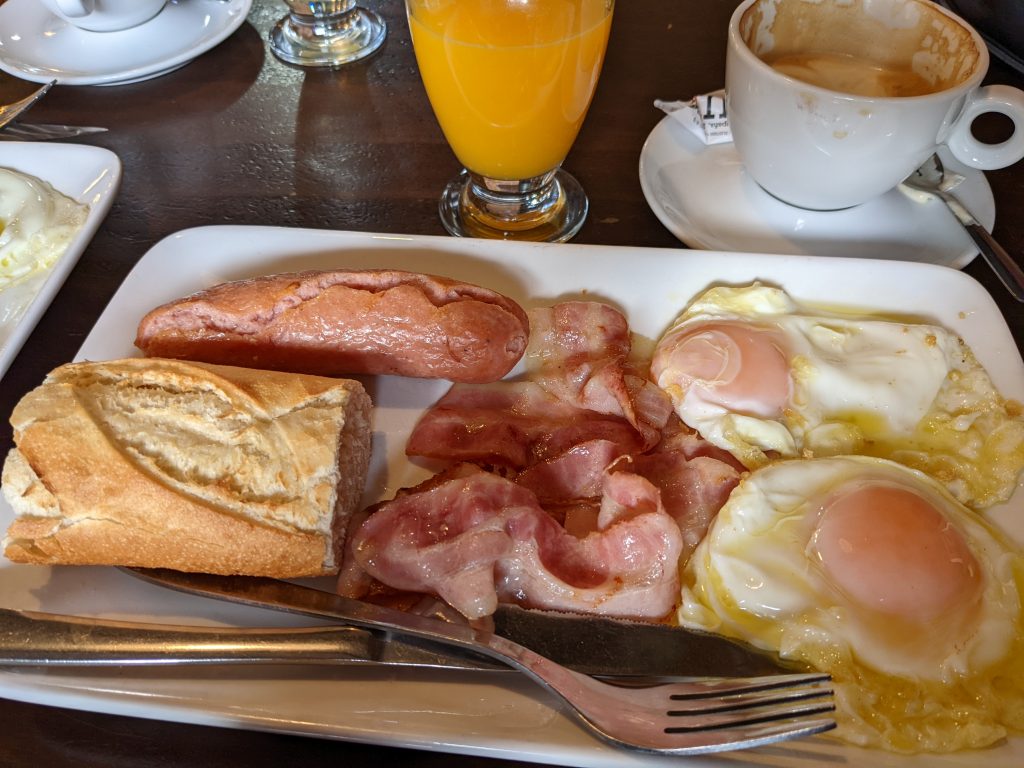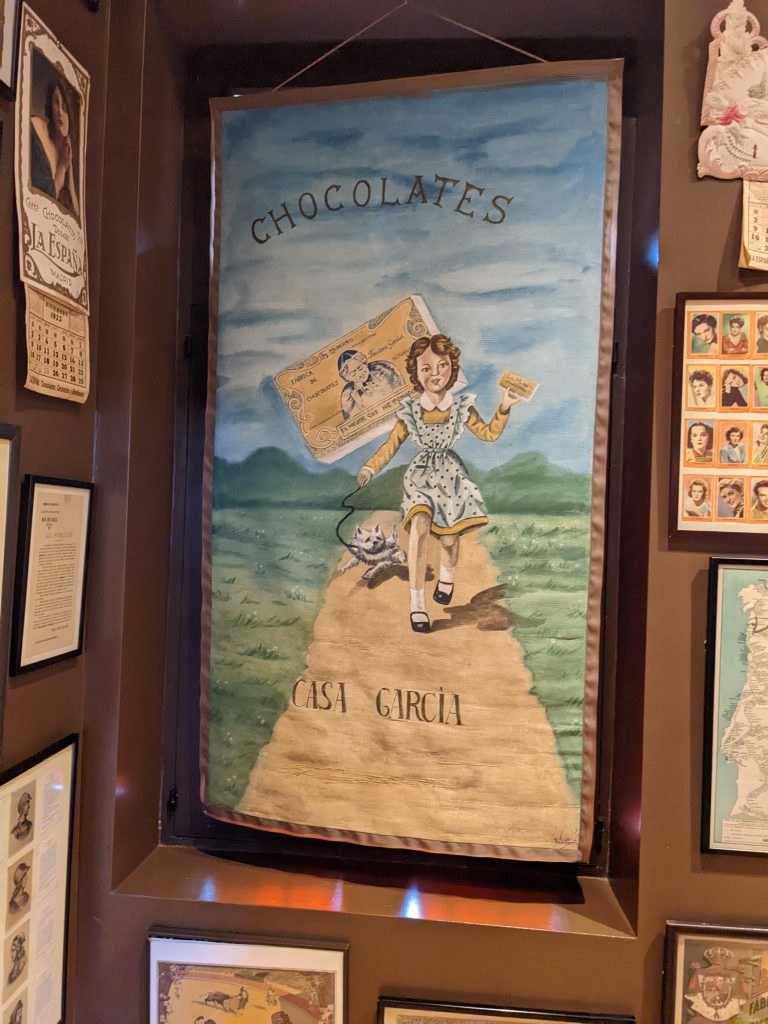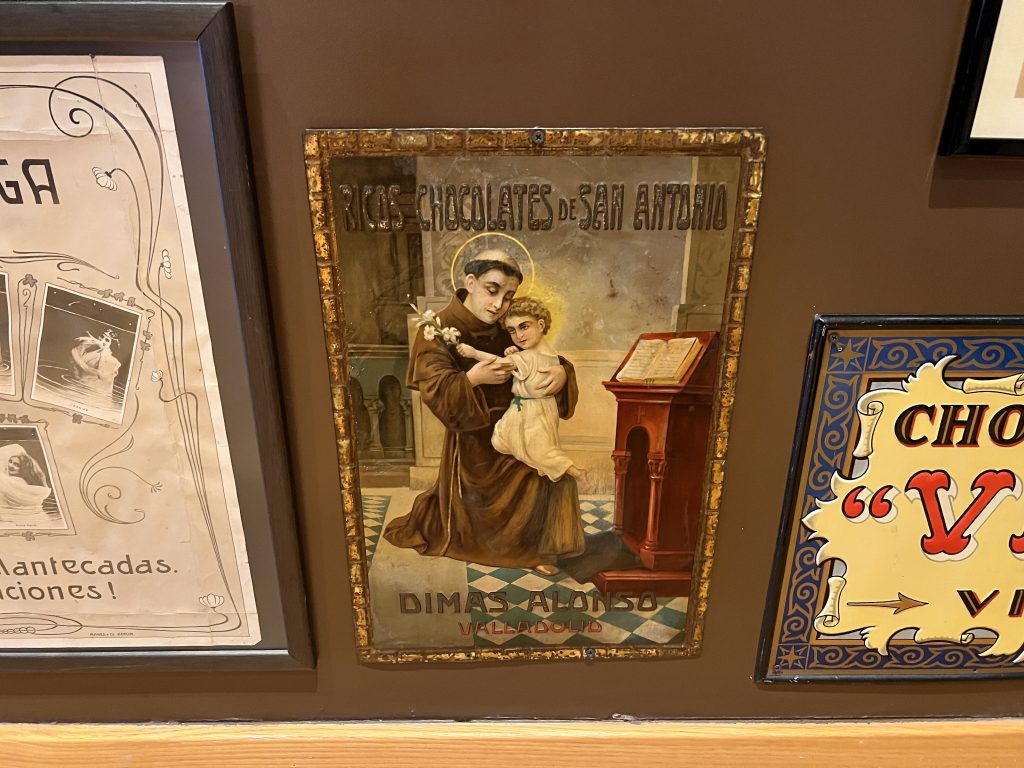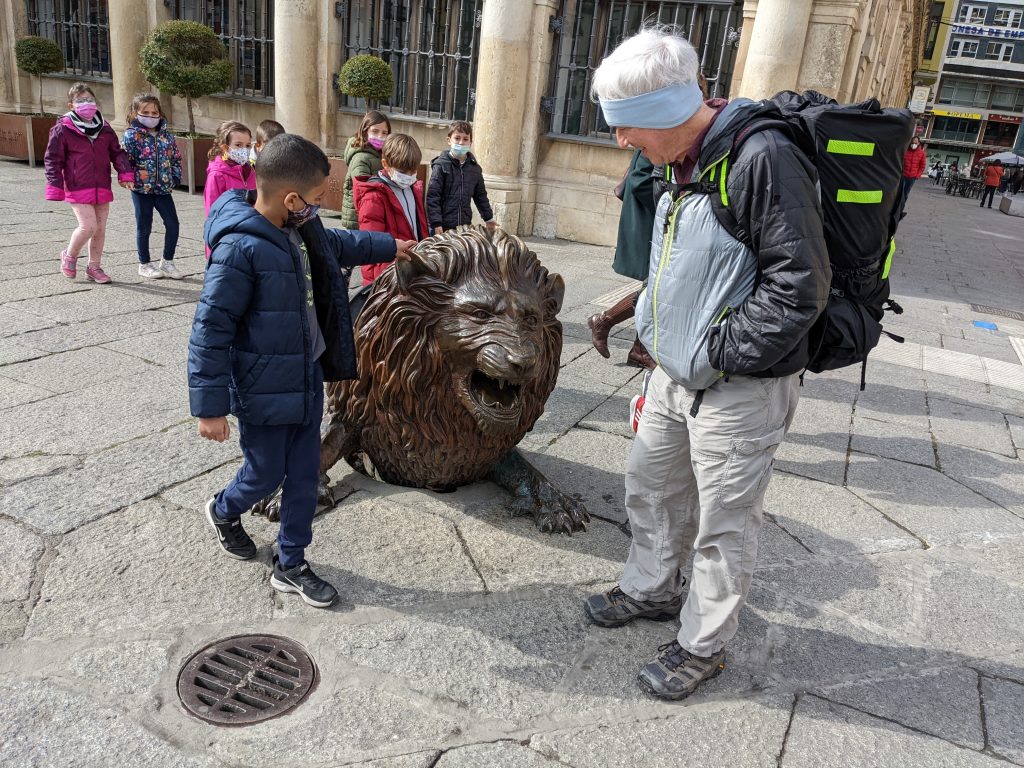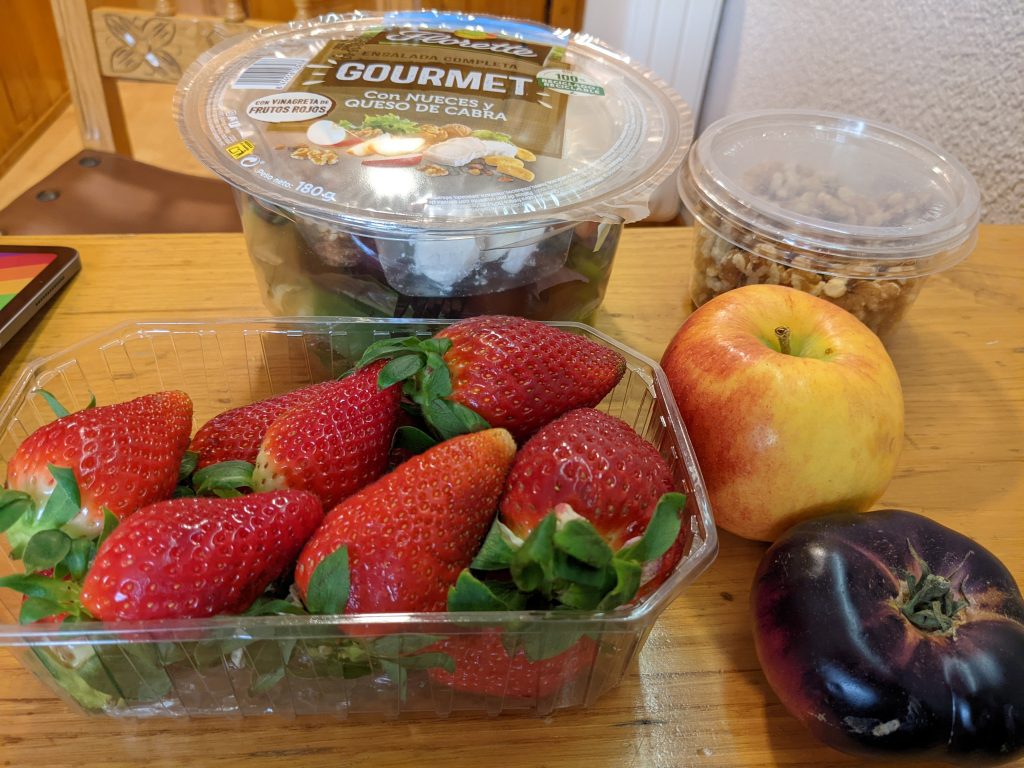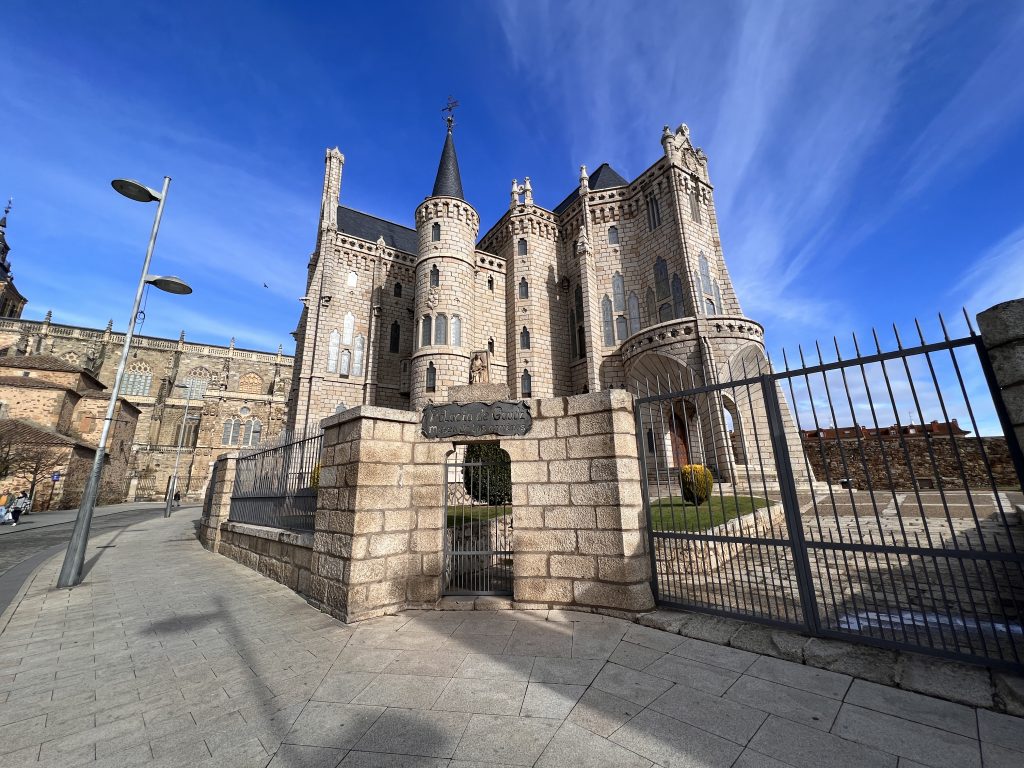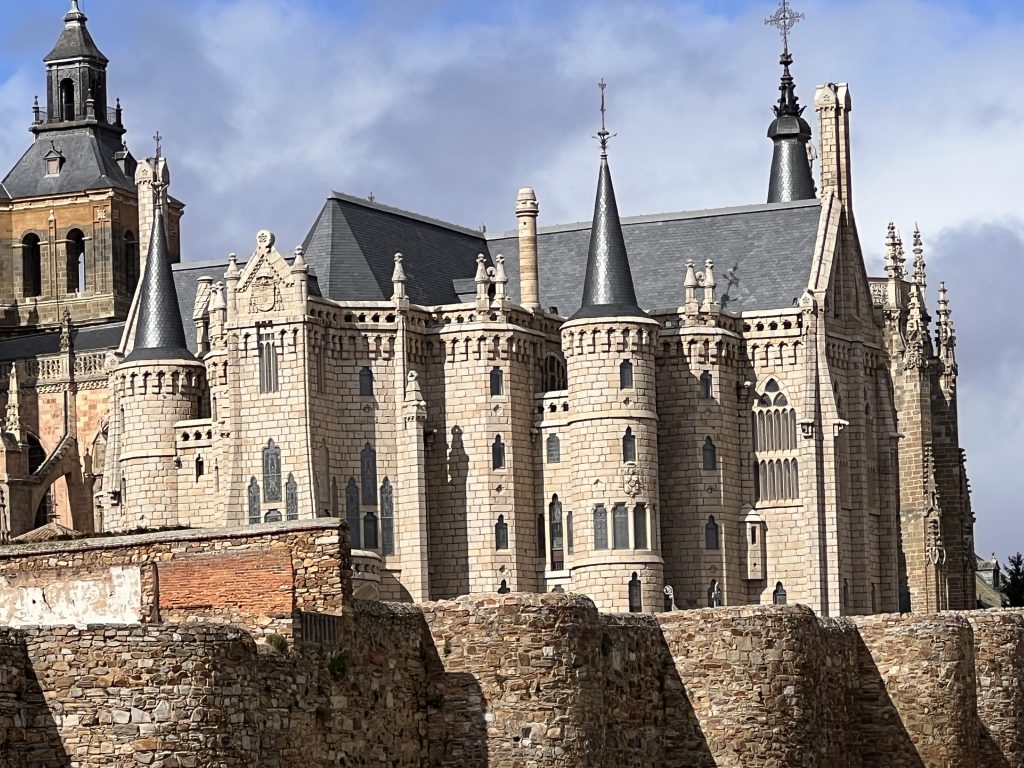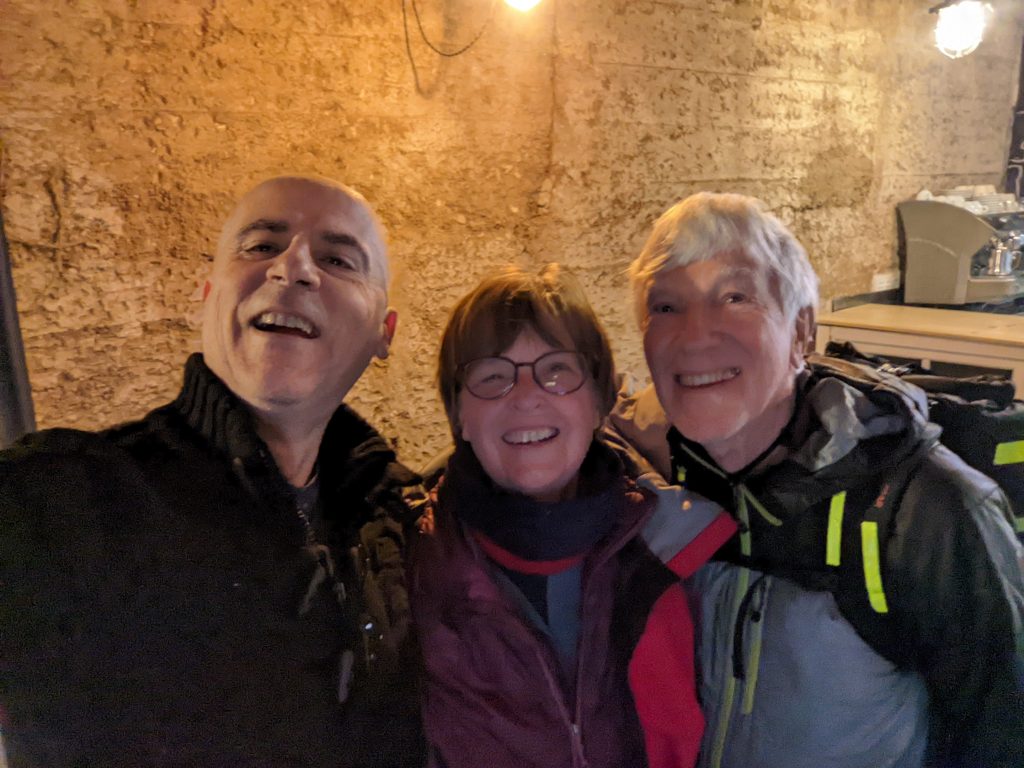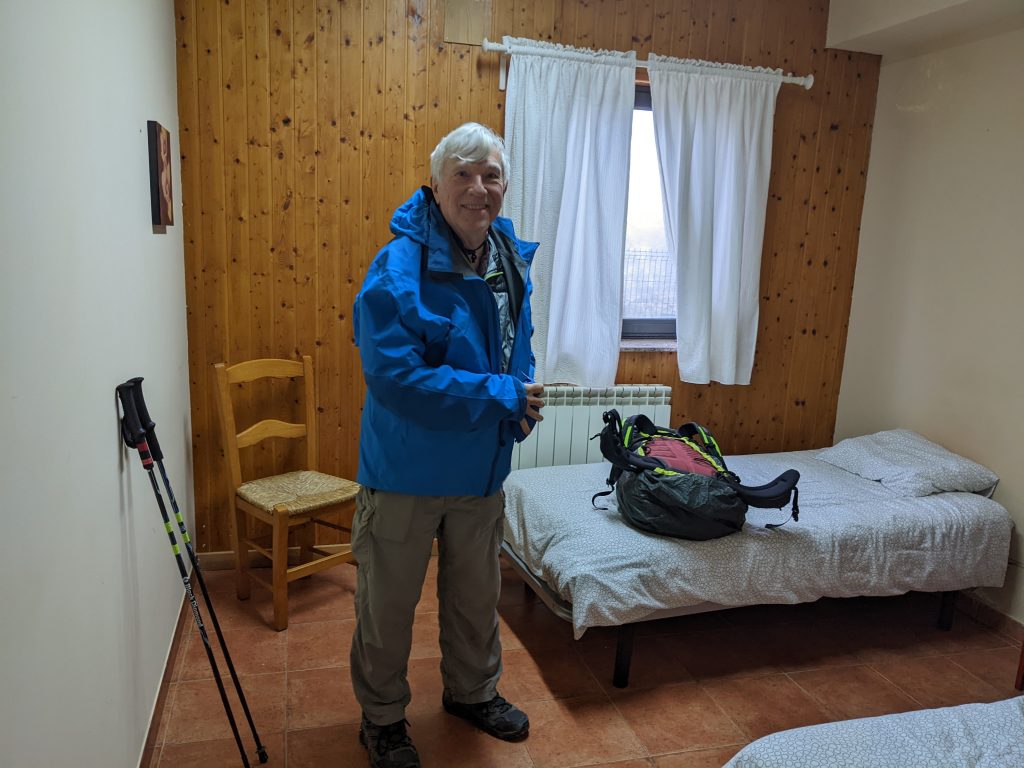Well, I keep going on and on about the food. I hope I’m not being too boring. This post is mainly about what a great bargain it is. I don’t think I’m exaggerating too much to say it is about half the cost of food in the US, at least in the smaller cities and towns. This morning, here in Astorga, we found a bar/cafe/restaurant for breakfast that had the best coffee we’ve had so far. It was more expensive than usual: 1.30 euros. (1 euro right now $1.10.) So that makes the coffee roughly $1.50. In the states a coffee this good would be about $4.00, I think. This place actually advertised that they served “English breakfast” (as well as the typical coffee and a roll European breakfast) so we ordered that. We weren’t sure what it would include. Turned out to be two fried eggs, LOTS of bacon and sausage, bread, a generous glass of fresh-squeezed orange juice, and a coffee, all for 4.90 euros. Keep in mind any price I quote any time includes tax and tip. (Well, they don’t expect to the tipped here in Spain. Sometimes people leave a little extra change if they get some extra change after paying.)
This morning, when Charlie paid for our English breakfasts, he left a 2 euro tip just because it seemed so ridiculously inexpensive. He walked away and I saw the server look at the money he left on the counter and point it out to the other server/cook. They both looked over in our direction. I felt like we had done something wrong based on how they looked at us. I guess people might think that we assume they are needy. Waiters and waitresses in Spain get paid better than they do in the US and don’t depend on tips.
Yesterday we stopped at a bar/cafe and had fried eggs, toast, coffee and they also threw in some Spanish tortilla (omelette) and more bread and the total cost for BOTH of us was 7 euros. I don’t understand how they can make any money at these prices.
